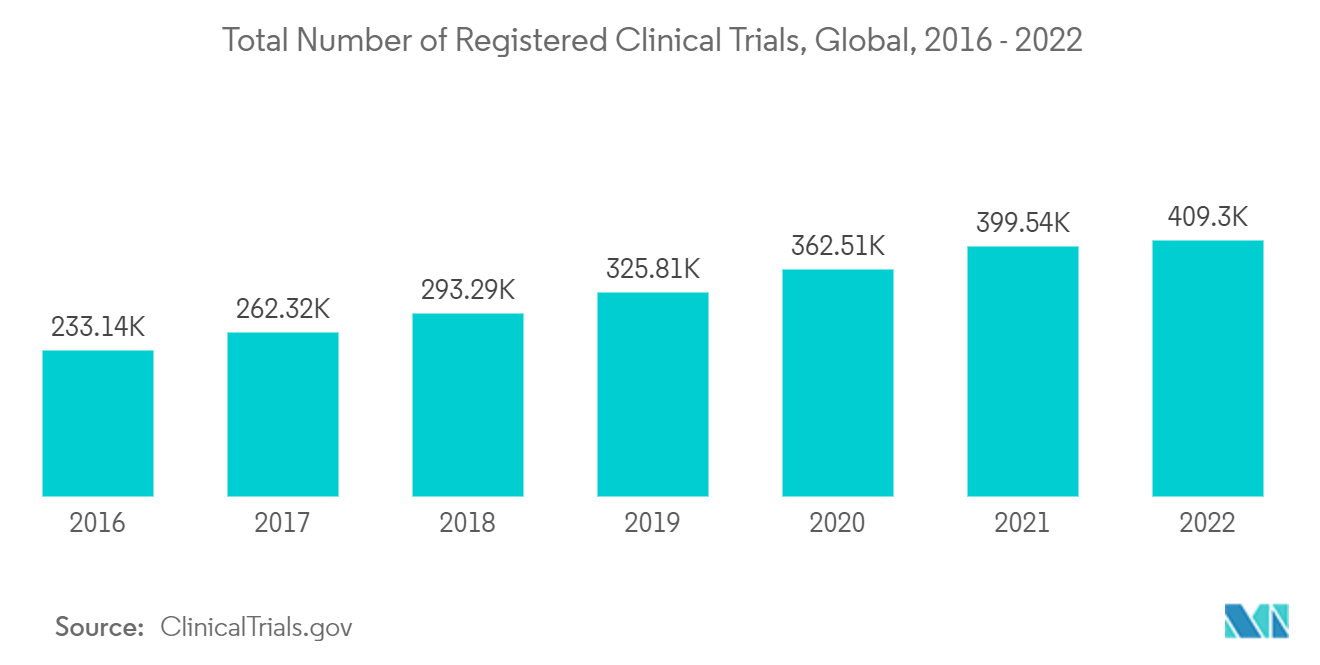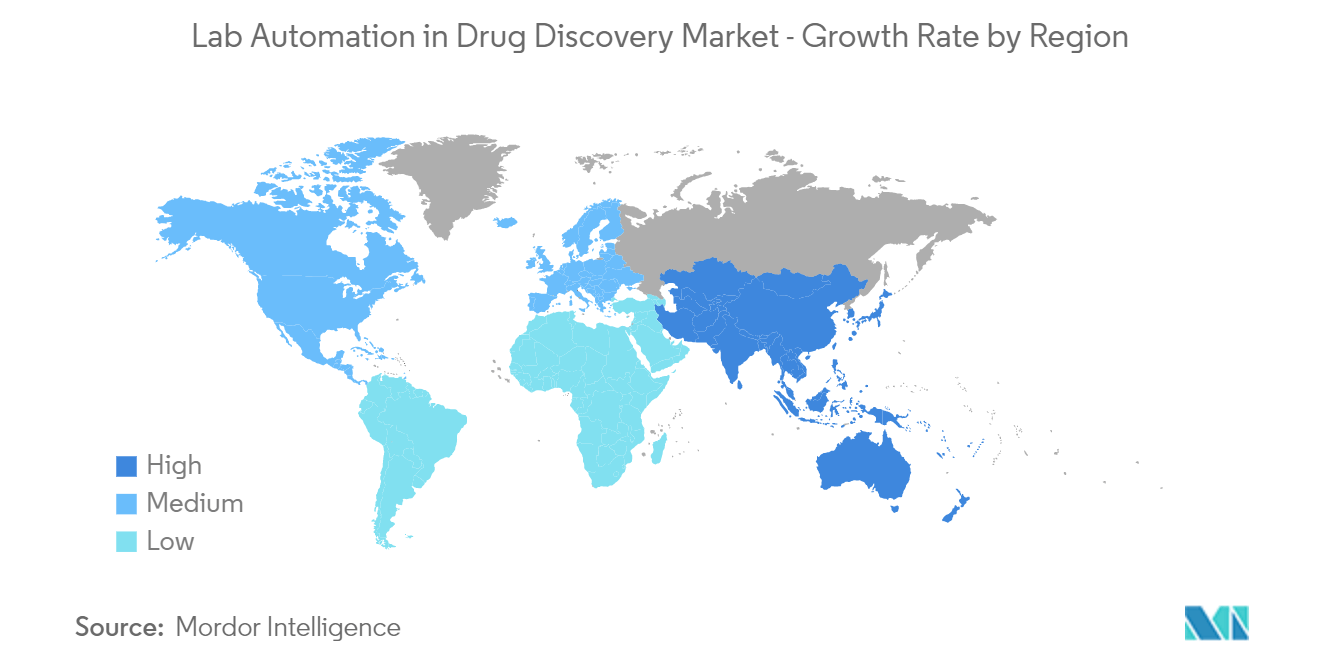Market Trends of Lab Automation In Drug Discovery Industry
Automated Liquid Handlers are Expected to Account for the Largest Market Share
- Liquid handlers are generally employed in biochemical and chemical laboratories. The need for high throughput screening in the drug discovery sector is increasing and is driving the demand for liquid handlers. However, miniaturization is becoming one of the main factors in drug discovery as the lab space is one of the most accountable factors for laboratories globally.
- The cost per square foot for laboratories is rising in major technology hubs. Researchers and scientists are focusing on instrumentation that takes a smaller amount of space and provides optimal performance. One such example of the miniaturized liquid handler is the flexi liquid handling platform, which is designed to combine with multiple systems, such as the robotic arm, stackers, and multiple systems, among others.
- Therefore, such platforms are increasing cost savings as there is an increased reduction in reagent volumes used in high throughput screening. Furthermore, the availability of reagent volumes in drug discovery is limited, and the automated liquid handlers are helping end users in large-scale screening with lower volumes of reagents.
- Vendors in the market have been introducing new automated liquid handlers to meet the requirements of modern laboratories established for drug discoveries. For instance, in February 2022, SPT Labtech announced the launch of their apricot DC1 platform, which serves 4-in-1 automated liquid handling specifications. The platform incorporates four separate pipetting tools in a single benchtop unit to enable dual-core pipetting technology for low-volume, high-volume, single, and multichannel pipetting used during drug discoveries.
- Furthermore, apart from miniaturization, automated liquid handlers are being proven to improve lab standardization by automating sample tracking and Laboratory Information Management Systems integrations. In addition, the liquid handlers facilitate the incorporation of automated barcode scanning into every step of sample processing. Thus, it makes it easy for the users to proceed with predefined work orders and import data into their management systems without requiring manual recordings.
- Moreover, the growing complexities of screening assays in drug discovery are shifting the focus of end users to incorporate speed-based performance toward system-based flexibility and data integrity. In addition, one of the significant challenges in the manual liquid handling process is the ordering and timing of reagent additions and general volumetric performance (for handling assays). Therefore, vendors in the market are designing automated liquid handlers with positive displacement dispensing technology that enables time-course reagent additions.
- Furthermore, according to ClinalTrials.gov, the total number of registered clinical studies as of March 2022 is 409,300. Such increased focus on research and development is expected to drive the need for enhancing the automated liquid handlers equipment globally.

North America is Expected to Hold the Largest Market Share
- North America is anticipated to register a significant share due to the United States' presence, a country with significant investments in drug discovery. This country is home to some major pharmaceutical companies, like Novartis, Pfizer, GlaxoSmithKline, J&J, and Novartis.
- Moreover, with the presence of significant market players in the region, the investment in drug discovery is also enormous in the region. For instance, in July 2023, Pfizer and venture firm Flagship Pioneering announced investing USD 100 million together to develop up to 10 new potential drugs for areas including internal medicine, oncology, infectious diseases, and immunology. Under the terms of the agreement, Flagship-backed companies can receive about USD 700 million in milestones and royalties upon the successful launch and sale of any of the experimental treatments discovered and developed under the partnership. This adds up to the opportunity for the market studied owing to the presence of updated and automated labs by these market players to get desired outcomes.
- In addition to this, the growing number of drug approvals in the region also showcases the continuous evolution of drug discovery in the country, which presents the importance of proper automated labs that can lead to accurate results and faster outcomes with optimized operations. For instance, according to Nature Reviews Drug Discovery, in 2022, the FDA's Center for Drug Evaluation and Research (CDER) approved 37 novel drugs.
- The market is also witnessing growing investments in incorporating AI and machine learning technologies in drug discoveries, driving the need for lab automation in the region. For instance, Google DeepMind's AI technology developed the g DL algorithm to predict the 3D structure of proteins from primary sequences. In addition, Google also began the Innovation Lab project with Sanofi to improve drug discovery with emerging technologies.


